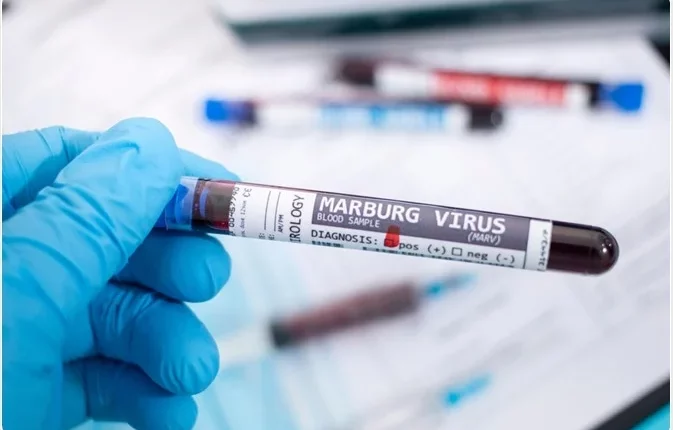The Ghana Health Service (GHS), has said it has sufficient measures to curb the outbreak of the Marburg virus disease in Ghana.
Marburg is a highly infectious viral haemorrhagic fever in the same family as the well-known Ebola virus disease.
Following the suspected case in the nation, the GHS reports that more than 90 contacts, including health professionals and community members, have been identified and are being closely watched.
The Director General of GHS, Dr. Patrick Kumah-Aboagye dispelling fears of the general public said none of those quarantined so far has contracted the disease.
“We have trained teams in communities and response teams that are ready and will be on hand when needed to ensure that even if the virus crops up … we can quickly ensure it does not spread.”
“We have surveillance reporting on any suspected recordings and cases of people who exhibit symptoms [of the Marburg virus]. And this is why we were able to contain it so quickly, So far, we have done contact tracing of those who came into contact with the people who had contracted the virus … And we have confirmed that none have contracted it.”Dr Kumah-Aboagye told Asaase radio.
- Causes of the Marburg Virus disease
MVD is caused by the Marburg virus, a genetically unique zoonotic (or, animal-borne) RNA virus of the filovirus family.
Marburg virus was first recognized in 1967, when outbreaks of hemorrhagic fever occurred simultaneously in laboratories in Marburg and Frankfurt, Germany, and in Belgrade, Yugoslavia (now Serbia).
Thirty-one people became ill, initially laboratory workers followed by several medical personnel and family members who had cared for them. Seven deaths were reported.
- How can a person get infected?
Humans usually get infected with this disease after long exposure to mines or caves where Rousettus bat colonies live. These bats are natural hosts of the Marburg virus.
Marburg virus spreads from person to person through direct contact with an infected person’s blood, organs, secretions, or other bodily fluids. Materials and surfaces (like clothing or bedding) can contain infected fluids, and touching them can also spread the virus.
Transmission can also result from contaminated injection tools or needle-stick injuries. These cases usually cause more intense disease, a quick decline in health, and perhaps a higher death rate.
In addition, burial ceremonies that involve direct contact with the body of someone who had MVD could also lead to transmission. Experts still consider you infectious if your blood contains the virus.
- Symptoms of Marburg Virus Disease
The incubation period, which refers to the length of time from infection to when you first notice symptoms, is between 2 to 21 days.
After this period, symptom onset is sudden and marked by fever, chills, headache, and myalgia.
Around the fifth day after the onset of symptoms, a maculopapular rash, most prominent on the trunk (chest, back, stomach), may occur. Nausea, vomiting, chest pain, a sore throat, abdominal pain, and diarrhea may appear.
Symptoms become increasingly severe and can include jaundice, inflammation of the pancreas, severe weight loss, delirium, shock, liver failure, massive hemorrhaging, and multi-organ dysfunction.

- Diagnosis of MVD
- Can Marburg Virus Disease be treated?
There is no specific treatment for Marburg virus disease.
But supportive hospital therapy can be used, which includes balancing the patient’s fluids and electrolytes, maintaining oxygen status and blood pressure, replacing lost blood and clotting factors, and treating for any complicating infections.

- How can it be prevented?
Avoid close or physical contact with Marburg patients. Persons taking care of infected patients must wear gloves and appropriate personal protective equipment and practice regular handwashing.
Also, identifying people who may have been in contact with someone infected with the Marburg virus and monitoring their health for 21 days, separating the healthy from the sick to prevent further spread, and providing care to the confirmed patient can contain the spread of the disease.
Maintaining good hygiene and a clean environment needs to be observed.
The outbreak of the virus can be prevented when there is a prompt, safe, and dignified burial of the deceased affected by the disease.



